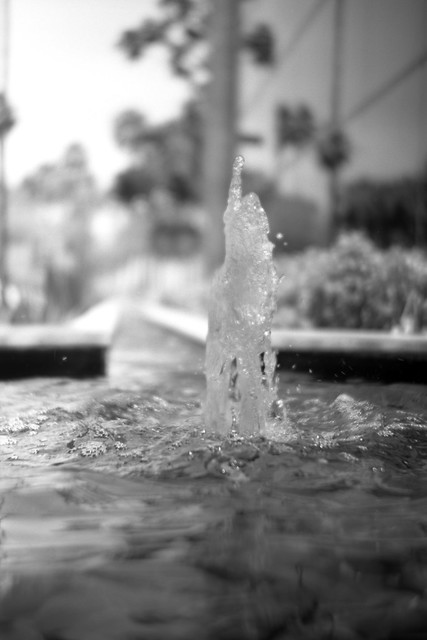Check out the rest of the series if you have a minute.










Moving water is different. It brings action to the photo and a feeling of dynamism and energy. With moving water you have choices. In the photo of the fountain, I froze the water. It is still obvious that the water is moving, but with fast shutter speeds, the water is silenced. You get that same feeling as with a sports photo where the player is in mid air with some crazy look on his face. The action is there, but it is a moment frozen and taken out of time. It is unnatural. It creates tension because it is outside of our experience. We look at it and wait for the column to fall, the droplets to continue their arc downward.
In the photo of the McKenzie river below, I slowed down the shutter by closing the aperture a couple of stops and resting the camera on a rock to avoid any blur from shaky hands. This creates motion blur in the water while the trees and scenery on the shore are still in good focus. This tells our eyes that the water is moving, even though it is a still photo. That information relieves the tension in the photo and all is well with the world. We can view this photo as a 'normal' riverscape with the water rushing by us just like we have always experienced. You can almost hear the rush of the water over the rocks and feel the spray.




